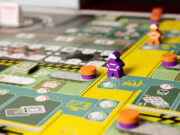 I used to regularly go camping at the boundary waters between the U.S. and Canada. It was very hard not to appreciate what nature provides like food, shelter, and even fuel for a fire. It also taught you to respect it like when you’re fishing in the shallows from your canoe and a moose bellows to let you know that he doesn’t like you in its “spot”. You’d better paddle toward deep water as quickly and quietly as you can before it decides to stomp, kick, or charge you and your toy boat.
I used to regularly go camping at the boundary waters between the U.S. and Canada. It was very hard not to appreciate what nature provides like food, shelter, and even fuel for a fire. It also taught you to respect it like when you’re fishing in the shallows from your canoe and a moose bellows to let you know that he doesn’t like you in its “spot”. You’d better paddle toward deep water as quickly and quietly as you can before it decides to stomp, kick, or charge you and your toy boat.
This brings us to today’s review Benevolent where you’re heading out to a magical forest to respect its guardians and to gather their 5 different gift tokens to win. Benevolent is for 2-4 players and plays in about 20 minutes.
Game Overview:
Players will take turns starting with the first player and a player can move and then take an action on their turn. When a first player moves, they place one of their 4 remaining footsteps on any space on the player board. There are two things to note on their subsequent turn moves. Players must place their footprints adjacent to their footprints on the player board and cannot place a footprint on a space they already have their footprint on. Other players or gray footprints on the player board do not affect your movement.
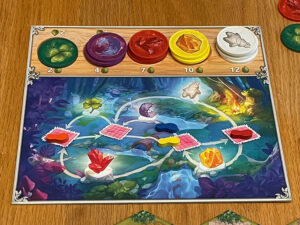
After movement, players can perform an action and have two choices: perform the hex’s action on the player board or gather 2 leaves. Before players take a Hex action, they must pay 1 leaf for a gray footstep and for each other player’s footsteps on that Hex. If the player selects not to take the Hex action they do not pay other players if they have footsteps on the Hex and the actions you can take are as follows:
- Stone Altar – allows a player to purchase a gift token
- Meadow – allows a player to collect a Clover gift token
- Nest – allows a player to collect a Feather gift token
- Pond – allows a player to move on the Dream board and possibly collect various gift token
- Ring of Stones – allows a player to exchange a gift token for the next in value
- Wooden Table – allows a player to take one Secret tile
When a player collects each of the 5 different gift tokens Clover, Feather, Crystal, Amber, & Figurine, then the game ends immediately and that player wins.
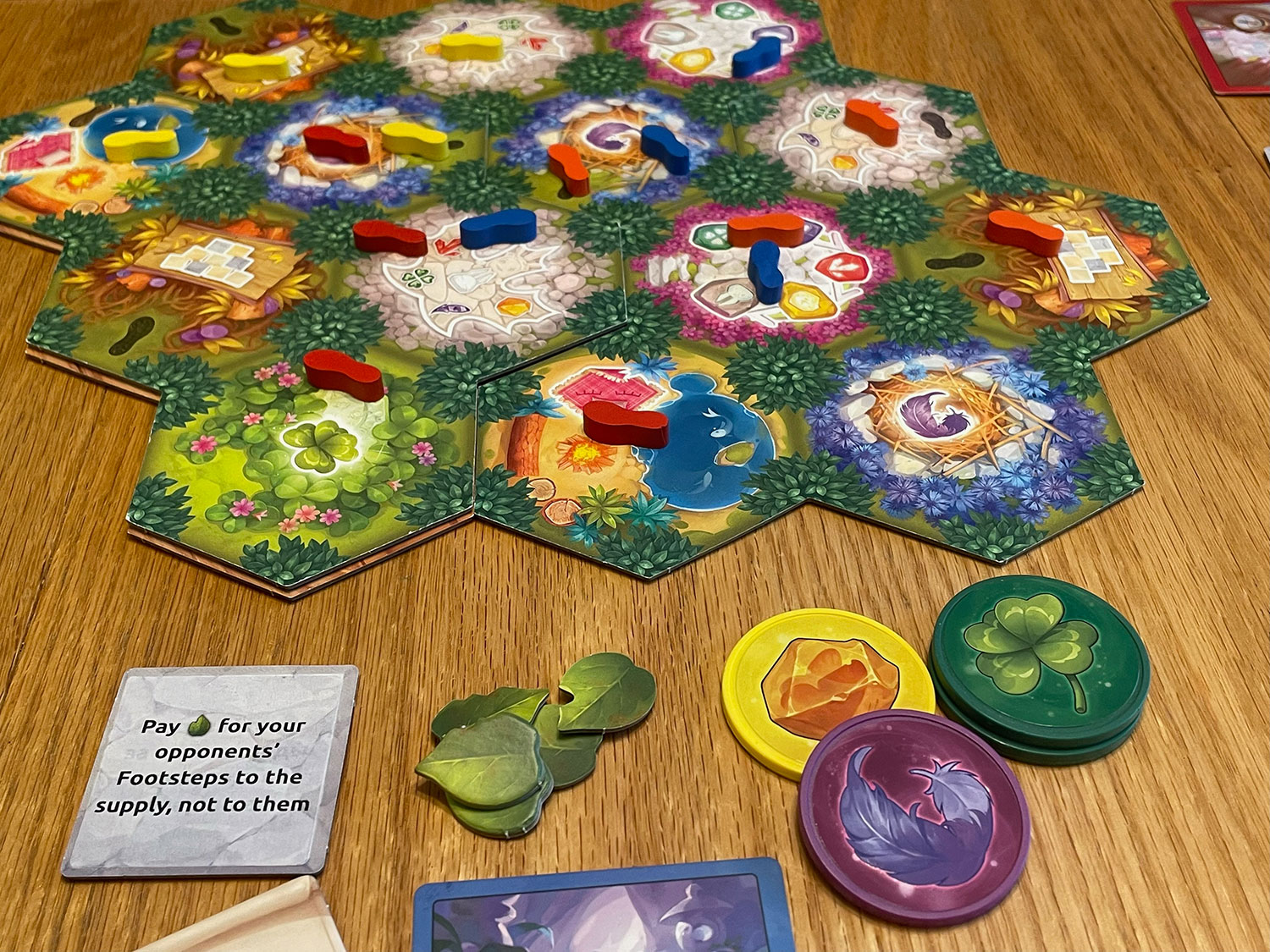
Game Experience:
Benevolent is easy to learn and is fast to the table. It’s also easy to teach and only takes a few minutes for most new players to pick up. The only thing most players need help with is recognizing the 6 different board hex actions. What surprised me is that Benevolent play is quick. Players only have 1 movement and 1 action per turn and everyone starts with 1 of the 5 tokens you need to win. So, it does not overstay its welcome and so your first game will be the longest and the subsequent will be much quicker.
The game mechanic that was slick was the footstep movement. The fact that you must be adjacent and can only have 1 on a hex makes you plan out your actions and try to really maximize your turns with where you can go. Now, during the game, it can be frustrating as a player because you could be so close to victory but from a design standpoint it’s a great balancing mechanic that all players must abide by.
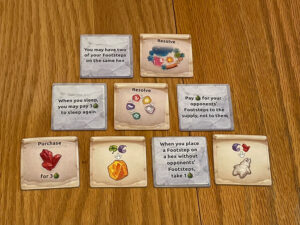
What I didn’t like in Benevolent is that there is one Secret tile that on either side breaks the footstep rules. The one side allows a player to have two of their footsteps on the same hex and the other allows a player to not have their footsteps connected. Both seem broken to me more so the former because the balance of the game is now thrown off. I would prefer not to use this tile at all, but the game only comes with 9 Secret tiles, and they’re arranged in a pyramid, so we always place it at the top.
Why would placing mechanic breaking Secret tile matter at the top of the pyramid? I’m glad you asked. Another mechanic that I like is you’re only allowed to select a Secret tile if there are no tiles below it. So, while the other 8 are randomly placed that one is stuck at the top and will not affect the start of the game. The other thing is that I like that as you randomly place these some have a permanent and single-use side. Permanent stay in front of you to be used throughout the game while single use are returned to the game box after use.
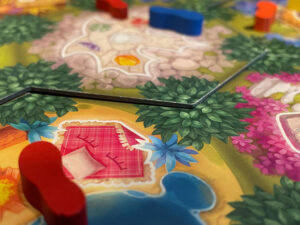
The last thing I want to highlight in Benevolent is that there are plenty of decisions to make and those will be productive. Turns are not wasted because most hex actions and even collecting leaves will help you get that one step closer to victory. You can focus on the player board trying to collect, trade up, or purchase higher value gift tokens, try to make moves on the Dream board to collect gift tokens, or gather Secret tiles to get advantages. This is not a game where you take a turn and nothing you did was beneficial.
The last and negative thing that I wanted to note is that while the overall production values are good the forest player board should have had larger hexes. It becomes apparent that these are too small when you play 3-4 players and it’s hard at times to see hex action, especially the pre-printed grey footprints. Also, the board setup is a bit clunky with some board overlaying for the 2 and 4-player set-up. You actually must use the Reference pad to physically balance the overlaying tiles which slid on us at times during gameplay. These hexes should have been larger single Catan-style with additional direction for placement instead of overlaying boards that include hexes.
Final Thoughts:
Benevolent is an easy game to learn and teach and plays fast. The footstep movement mechanic is slick and balances the game since all players need to abide by the same rules. The Secret tile pyramid doesn’t allow players to choose any but only those which have no tiles underneath so you can bury broken ones at the top. Plus, every turn gives players plenty of productive decisions and your turns do not feel wasted.
What holds Benevolent from scoring higher is the Secret tiles that break the footstep rule mechanic and forest player board design.
Final Score: 3.5 Stars – A fun set collection game with a unique movement mechanic that provides players with productive decisions each turn.
 Hits:
Hits:
• Easy to learn & quick play
• Footstep movement
• Secret tile pyramid
• Plenty of decisions
Misses:
• Some Secret tiles break mechanics
• Player board design






